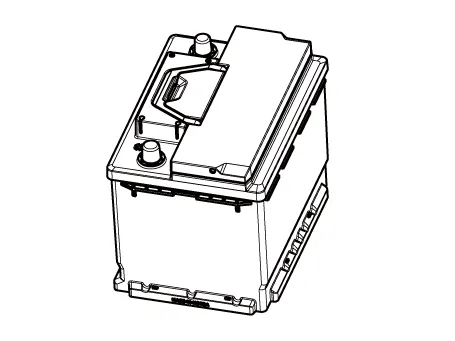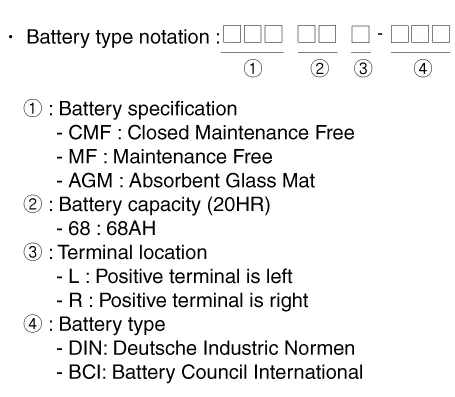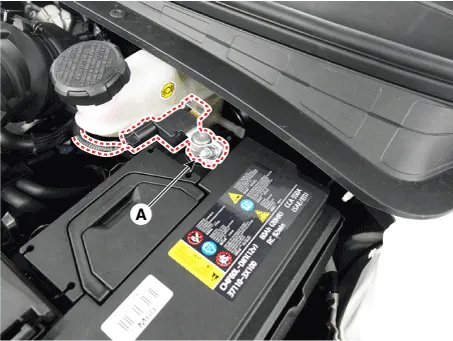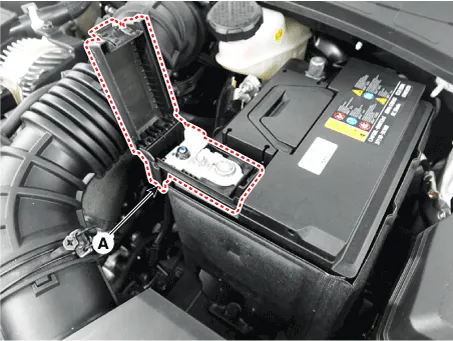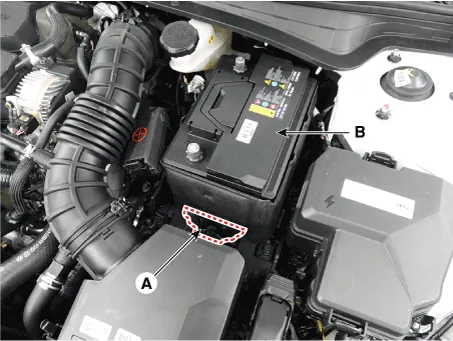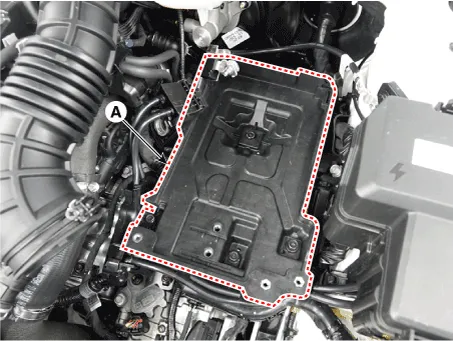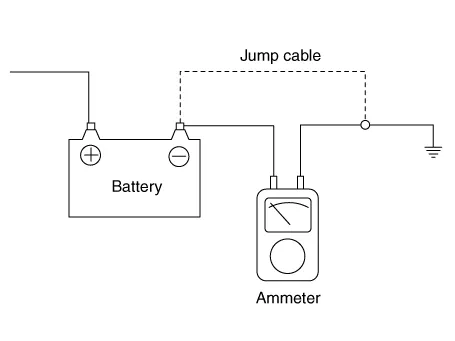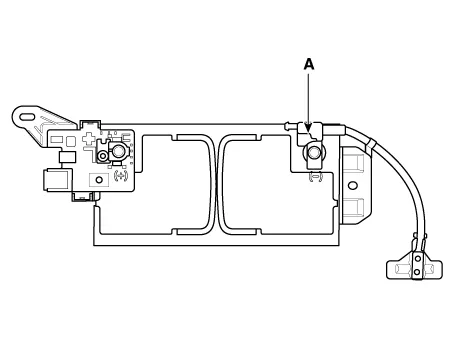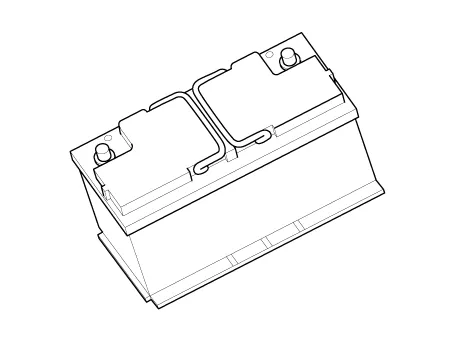Hyundai Elantra (CN7): Charging System / Battery
Description and operation
| Description |
| 1. | The CMF (Closed Maintenance Free) battery is, as the name implies, totally maintenance free and has no removable battery cell caps. |
| 2. | The MF (Closed Maintenance Free) battery does not require water replenishment for the repair. |
| 3. | The battery is completely sealed, except for small vent holes in the cover.
|
Specifications
| Specifications |
â–¶CMF68L-DIN
|
Item
|
Specification
|
| Model typeModel type | CMF68L-DIN |
| Capacity [20HR/5HR] (AH) | 68 / 54 |
| Cold Cranking Amperage (A) | 760 (SAE / EN) |
| Reserve Capacity (Min) | 110 |
|
Troubleshooting
| Troubleshooting |

Repair procedures
| Removal |
Battery
| 1. | Turn the ignition switch OFF. |
| 2. | Disconnect the battery (-) terminal (A).
|
| 3. | Remove the battery (+) terminal (A).
|
| 4. | Remove the battery mouting bracket (A). |
| 5. | Remove the battery insulation pad after removing the battery (B).
|
Battery tray
| 1. | Remove the battery. (Refer to "Removal") |
| 2. | Remove the air cleaner assembly. (Refer to Engine Mechanical System - "Air Cleaner") |
| 3. | Remove the ECM. (Refer to Engine Control / Fuel System - "Engine Control Module (ECM)") |
| 4. | Remove the battery tray (A) after loosening the bolts.
|
| Installation |
| 1. | Install in the reverse order of removal.
|
Vehicle Parasitic current inspection
| 1. | Turn the all electric devices OFF, and then turn the ignition switch OFF. |
| 2. | Close all doors except the engine hood, and then lock all doors.
|
| 3. | Wait a few minutes until the vehicle’s electrical systems go to sleep mode.
|
| 4. | Connect an ammeter in series between the battery (-) terminal and the ground cable, and then disconnect the clamp from the battery (-) terminal slowly.
|
| 5. | Read the current value of the ammeter.
|
| Cleaning |
| 1. | Make sure the ignition switch and all accessories are in the OFF position. |
| 2. | Disconnect the battery negative cables (A). |
| 3. | Remove the battery from the vehicle. (Refer to Charging System - "Battery")
|
| 4. | Inspect the battery tray for damage caused by the loss of electrolyte. If acid damage is present, it will be necessary to clean the area with a solution of clean warm water and baking soda. Scrub the area with a stiff brush and wipe off with a cloth moistened with baking soda and water. |
| 5. | Clean the top of the battery with the same solution as described above. |
| 6. | Inspect the battery case and cover for cracks. If cracks are present, the battery must be replaced. |
| 7. | Clean the battery posts with a suitable battery post tool. |
| 8. | Clean the inside surface of the terminal clamps with a suitable battery cleaning tool. Replace damaged or frayed cables and broken terminal clamps. |
| 9. | Install the battery in the vehicle. |
| 10. | Connect the cable terminals to the battery post, making sure tops of the terminals are flush with the tops of the posts. |
| 11. | Tighten the terminal nuts securely. |
| 12. | Coat all connections with light mineral grease after tightening.
|
Description and operation DescriptionThe Alternator has eight built-in diodes, each rectifying AC current to DC current.Therefore, DC current appears at alternator "B" terminal.
Description and operation DescriptionVehicles have many control units that use more electricity. These units control their own system based on information from diverse sensors.
Other information:
Hyundai Elantra (CN7) 2021-2025 Service Manual: Components and components location
C
Hyundai Elantra (CN7) 2021-2025 Service Manual: Auto Defogging Sensor
Description DescriptionThe auto defogging sensor is installed on the front window glass. The sensor judges and sends signal if moisture occurs to blow out wind for defogging. The air conditioner control module receives signal from the sensor and restrains moisture and eliminate defog by controlling the intake actuator, A/C, auto defogging actuat
Categories
- Manuals Home
- Hyundai Elantra Owners Manual
- Hyundai Elantra Service Manual
- Maintenance
- Specifications
- Heating, Ventilation and Air Conditioning
- New on site
- Most important about car
Copyright © 2025 www.helantra7.com - 0.0156

